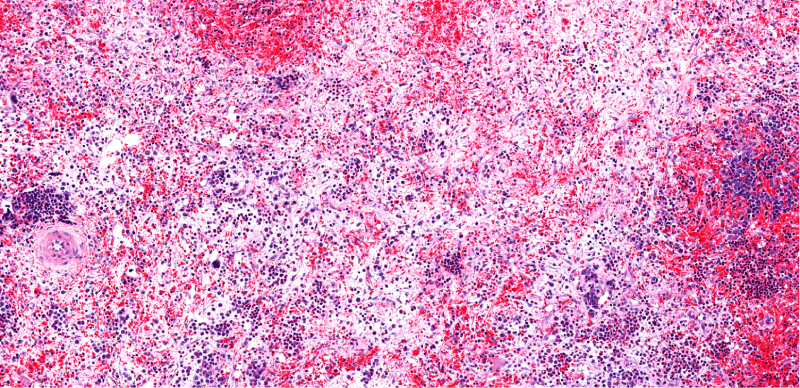
Acalabrutinib monotherapy and acalabrutinib combined with obinutuzumab exhibited promising long-term benefits when compared with obinutuzumab plus chlorambucil in treatment-naïve patients with chronic lymphocytic leukemia (CLL) enrolled in the ELEVATE-TN study, including those with high-risk genetic factors, stated updated analysis results presented at the 65th ASH Annual Meeting & Exposition in San Diego, California.
Data were presented by the study’s lead author, Jeff Sharman, MD, of the Willamette Valley Cancer Institue and Research Center in Eugene, Oregon. After six years of follow-up, Dr. Sharman and colleagues reported that progression-free survival (PFS) was significantly longer with acalabrutinib plus obinutuzumab compared with acalabrutinib alone, and median overall survival (OS) was significantly longer with acalabrutinib plus obinutuzumab compared with obinutuzumab plus chlorambucil.
ELEVATE-TN enrolled 535 patients, of which 179 received acalabrutinib, 179 received acalabrutinib plus obinutuzumab, and 177 received obinutuzumab plus chlorambucil. The overall cohort had a median age of 70 years, 63% had unmutated immunoglobulin heavy chain variable region, and 14% had del(17p) syndrome with or without TP53 mutation.
After a median follow-up of 74.5 months (range, 0.0-89.0), the obinutuzumab plus chlorambucil group had a median PFS of 27.8 months, while neither the acalabrutinib plus obinutuzumab (hazard ratio [HR], 0.14; P<.0001) nor acalabrutinib monotherapy group (HR, 0.23; P<.0001) reached median PFS. The HR for acalabrutinib with obinutuzumab versus without was 0.58 (P=.0229).
The median OS was not reached in either acalabrutinib arm compared with 74.9 months with obinutuzumab plus chlorambucil, and estimated rates of 72-month OS were 68% for acalabrutinib plus obinutuzumab, 72% for acalabrutinib, and 53% for obinutuzumab plus chlorambucil.
Compared with obinutuzumab plus chlorambucil, the acalabrutinib plus obinutuzumab group had significantly longer median OS (HR, 0.62; P=.0349), and the estimated 72-month OS rates were 84%, 76%, and 75% for acalabrutinib plus obinutuzumab, acalabrutinib, and obinutuzumab plus chlorambucil, respectively.
Finally, combined rates of complete response (CR) and CR with incomplete hematologic recovery were 37% with acalabrutinib plus obinutuxuamb, 19% with acalabrutinib, and 14% for obinutuzumab plus chlorambucil (both P≤.0499).
Overall, Dr. Sharman and colleagues concluded that the updated analysis reinforced the previously reported superiority of acalabturinib with or without obinutuzumab compared with obinutuzumab plus chlorambucil in patients with treatment-naïve CLL.
Reference
Sharman JP, Egyed M, Jurczak W, et al. Acalabrutinib ± obinutuzumab vs obinutuzumab + chlorambucil in treatment-naive chronic lymphocytic leukemia: 6-year follow-up of Elevate-TN. Abstract #636. Presented at the 65th ASH Annual Meeting and Exposition; December 9-12, 2023; San Diego, California.






 © 2025 Mashup Media, LLC, a Formedics Property. All Rights Reserved.
© 2025 Mashup Media, LLC, a Formedics Property. All Rights Reserved.